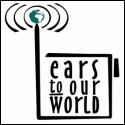Posts Tagged ‘communications’
 Vacuum Tubes – Electronics at Work: 1943 Educational Film
Vacuum Tubes – Electronics at Work: 1943 Educational Film
In the classic educational film titled “Electronics at Work,” produced by Westinghouse in 1943, viewers are introduced to the fascinating world of vacuum tubes. This film highlights the crucial role these devices played in both military and commercial sectors, including radio telecommunications, radar, and various industrial applications. The narrative suggests that vacuum tubes provided the United States with a significant advantage during World War II, particularly in enhancing communication and technology.
The Continuing Relevance of Vacuum Tubes
Despite advances in technology, vacuum tubes remain in use today for several applications, including:
– Transmitting radios
– Medical devices
– Audio amplification systems
– High-frequency applications
Understanding Vacuum Tubes
The film outlines the six basic functions of electronic tubes and illustrates how each type is employed in different industrial and military contexts.
Structure of a Vacuum Tube
A vacuum tube typically consists of two or more electrodes housed within a vacuum inside an airtight enclosure. Key features include:
– Electrode Types: Most vacuum tubes have glass envelopes, although some utilize ceramic or metal casings with insulating bases.
– Leads and Sockets: The electrodes connect to leads that pass through the envelope via an airtight seal. These leads often take the form of pins, allowing for easy replacement in a tube socket, as tubes were a common point of failure in electronic devices.
– Capacitive Design: Some tubes feature a top cap on the electrode to minimize interelectrode capacitance, enhancing high-frequency performance and maintaining safety by separating high voltages.
The Evolution of Vacuum Tubes
The earliest vacuum tubes emerged from incandescent light bulbs, which contained a heated filament sealed in an evacuated glass envelope. When heated, the filament releases electrons into the vacuum through a process known as thermionic emission.
– Electrode Functionality: A second electrode, known as the anode or plate, attracts these electrons if it holds a more positive voltage. This mechanism results in a flow of electrons from the filament (cathode) to the plate, creating an electric field due to the potential difference between them.
– Diode Function: A vacuum tube with two electrodes is termed a diode, which functions as a rectifier. Diodes allow current to flow in only one direction, converting alternating current (AC) into pulsating direct current (DC). This technology is widely used in DC power supplies and in demodulating amplitude-modulated (AM) radio signals.
Film Availability and Production Details
This film is available in the public domain under Creative Commons, and it can be accessed through the Library of Congress Prelinger Archives. The film has been edited and converted to HD quality for better viewing. Introductory and closing music is provided by Nero 10, with commercial use rights granted.
This film not only serves as an educational tool but also highlights the enduring legacy of vacuum tube technology in the realm of electronics, illustrating its significant contributions to both past and present technological advancements.
Please subscribe to my YouTube Channel: https://YouTube.com/NW7US
Also, please click on the bell, to enable alerts so that when I post a new video, you will be notified. By subscribing and making sure that the bell (alert) notification is set to ALL, you will be kept in the loop for new videos and more.
 Modern Amateur Radio Hobby – An Introduction
Modern Amateur Radio Hobby – An Introduction
This video is an introduction to an international public-service and technology hobby known as ‘amateur radio’ (or ‘ham radio’).
Amateur radio (also called ham radio) describes the use of radio frequency spectrum for purposes of non-commercial exchange of messages, wireless experimentation, self-training, private recreation, radiosport, contesting, and emergency communication. The term “amateur” is used to specify “a duly-authorized person interested in radioelectric practice with a purely personal aim and without pecuniary interest;” (either direct monetary or other similar rewards) and to differentiate it from commercial broadcasting, public safety (such as police and fire), or professional two-way radio services (such as maritime, aviation, taxis, etc.).
The amateur radio service (amateur service and amateur-satellite service) is established by the International Telecommunication Union (ITU) through the Radio Regulations. National governments regulate technical and operational characteristics of transmissions and issue individual stations licenses with an identifying call sign. Prospective amateur operators are tested for their understanding of key concepts in electronics and the host government’s radio regulations. Radio amateurs use a variety of voice, text, image, and data communications modes and have access to frequency allocations throughout the RF spectrum to enable communication across a city, region, country, continent, the world, or even into space.
Amateur radio is officially represented and coordinated by the International Amateur Radio Union (IARU), which is organized in three regions and has as its members the national amateur radio societies which exist in most countries. According to an estimate made in 2011 by the American Radio Relay League, two million people throughout the world are regularly involved with amateur radio. About 830,000 amateur radio stations are located in IARU Region 2 (the Americas) followed by IARU Region 3 (South and East Asia and the Pacific Ocean) with about 750,000 stations. A significantly smaller number, about 400,000, are located in IARU Region 1 (Europe, Middle East, CIS, Africa).
Activities and practices
The expansive diversity found in the amateur radio hobby attracts practitioners who have a wide range of interests. Many hams begin with a fascination of radio communication and then combine other personal interests to make the pursuit of the hobby rewarding. Some of the focal areas amateurs pursue include radio contesting, radio propagation study, public service communication, technical experimentation, and computer networking. But, that is just a sampling of interest areas found in the hobby.
Amateur radio operators use various modes of transmission to communicate. The two most common modes for voice transmissions are frequency modulation (FM) and single sideband (SSB). The FM mode offers high-quality audio signals, while SSB is better at long distance communication when bandwidth is restricted.
Modern personal computers have encouraged the use of digital modes such as radioteletype (RTTY) which previously required cumbersome mechanical equipment. Hams led the development of packet radio in the 1970s, which has employed protocols such as AX.25 and TCP/IP. Specialized digital modes such as PSK31 allow real-time, low-power communications on the shortwave bands. More robust digital modes have been invented and improved, including such modes as Olivia, JT65, and WSPR.
NASA astronaut Col. Doug Wheelock, KF5BOC, Expedition 24 flight engineer, operates the NA1SS ham radio station in the Zvezda Service Module of the International Space Station. Equipment is a Kenwood TM-D700E transceiver.
Amateur radio operators, using battery- or generator-powered equipment, often provide essential communications services when regular channels are unavailable due to natural disasters or other disruptive events.
This video comes to us via Canada, and is used by permission from Bernard Bouchard – / ve2sms – The original video was published on Feb 28, 2013.- Website is https://www.ve2cwq.ca/amateur-radio-club-ve2cwq/
Voici maintenant, la version complète du documentaire «La radioamateur» d’une durée de 11 minutes. On y aborde toutes les activités sur le monde de la radioamateur. Ce vidéo a été produit par le Club Radioamateur VE2CWQ / Canwarn-Québec. Pour information: https://www.ve2cwq.ca/
Connect with me at https://NW7US.us
USA Amateur Radio information: http://ARRL.org
 New Book: Learning, Living, and Loving Morse Code…
New Book: Learning, Living, and Loving Morse Code…
There is a new book from a fellow Morse code amateur radio operator, Chris Rutkowski (NW6V), about “Learning, Living, and Loving Morse Code (in a Digital World).” NICE!
Title: “The CW Way of Life“
link: https://amzn.to/3Tm3KfD
Already, I think it rivals any other book on the topic, including “The Art and Skill of…,” or, “The Zen of…”
It is not, however, meant to replace, but to augment, what is available. But, it is a complete guide, including a “work book” section (nearly half of the book?) on how to improve your skill. Really good stuff, but I’m only in one day.
73 de NW7US dit dit
https://nw7us.us
..
 Perfect Straight-Key Morse Code? Can It Be Made Without Machines?
Perfect Straight-Key Morse Code? Can It Be Made Without Machines?
 Short Demonstration of Using Ham Radio Deluxe with WSJT-X and FT8 Digital Mode
Short Demonstration of Using Ham Radio Deluxe with WSJT-X and FT8 Digital Mode
Ham Radio Deluxe can log your WSJT-X FT8, JT65A, and JT9 QSOs, via the JT-Alert software. This is a demonstration of my use of HRD and Logbook, during an FT8 QSO,today.
As some of you know, I have had some differences of opinion regarding the selection of frequencies chosen by the FT8 creators and advocates. Regardless, I do still use the mode. Here is proof:
Go ahead and share, if you would. And, please subscribe to my YouTube channel, as I will be creating many how-to videos in the near future.
Thanks and 73 … de NW7US
 On How NCIS Maligned the Amateur Radio Service
On How NCIS Maligned the Amateur Radio Service
EDIT: Please view the NEW article, in which the FULL VERSION of this video exists.
I’ve been reading some of the chatter regarding the NCIS episode in which they incorrectly portray the amateur radio service. I thought I would make a video (vlog) and express my thoughts.
I use my new headset mic to make the video. If you have a few moments, please check it out, and let me know how the mic sounds.
Of course, share your thoughts on the NCIS thing… thanks!
Yes, the video gets prematurely cut off. The editing software on my cell phone chopped off the ending, and I did not realize it until after it posted the video. I’ll record a follow-up video that includes the ending thoughts, but in a new vlog edition.
Cheers and 73 de NW7US
..
 Old, But Still Useful!
Old, But Still Useful!
This old WWII military training video is still useful regarding Morse code:
This is an antique United States Navy Training Film from 1943/1944, in which proper hand-sending of Morse code is demonstrated. The film covers some basic principles and mechanics of manual keying of the International Morse code, as used during WWII.
Amateur (Ham) radio operators find Morse code (and the ‘CW’ mode, or ‘Continuous Wave’ keying mode) very useful, even though Morse code is no longer required as part of the licensing process. Morse code is highly effective in weak-signal radio work. And, preppers love Morse code because it is the most efficient way to communicate when there is a major disaster that could wipe out the communications infrastructure.
While this military film is antique, the vintage information is timeless, as the material is applicable to Morse code, even today.
There’s more about Morse code, at my website: http://cw.hfradio.org
For additional joy, here are a few of old films regarding Morse code:
Morse Code – Principles and Basic Techniques (US Army Signal)
(Learn to Send Perfect Morse Code by Hand – Vintage Training Film (Ham Radio / CW))
Vintage 1944 Radio Operator Training: How to Send Morse Code (CW) by Hand
This one is a pretty cool film:
1939 Film: New Zealand Shortwave Communications; Morse code (CW)
I’ve also created a play list, and most of the videos are still online. Once and a while something changes and I have to update the list. Here is the list:
Original Title: TECHNIQUE OF HAND SENDING, by Department of Defense, Published 1944
Usage CC0 1.0 Universal
TECHNIQUE OF HAND SENDING
PIN 23735 1944
IMPORTANT PARTS OF THE TRANSMITTER, TENSION SPRING, ADJUSTING CONTACTS, ADJUSTING SPRINGS. ELEMENTS OF MORSE CODE, TIMING, AND PARTS OF BODY THAT FUNCTION WHEN TRANSMITTING CODE. IMPORTANCE OF CORRECT POSITION AND OPERATION.
Producer Department of Defense
Enjoy!













